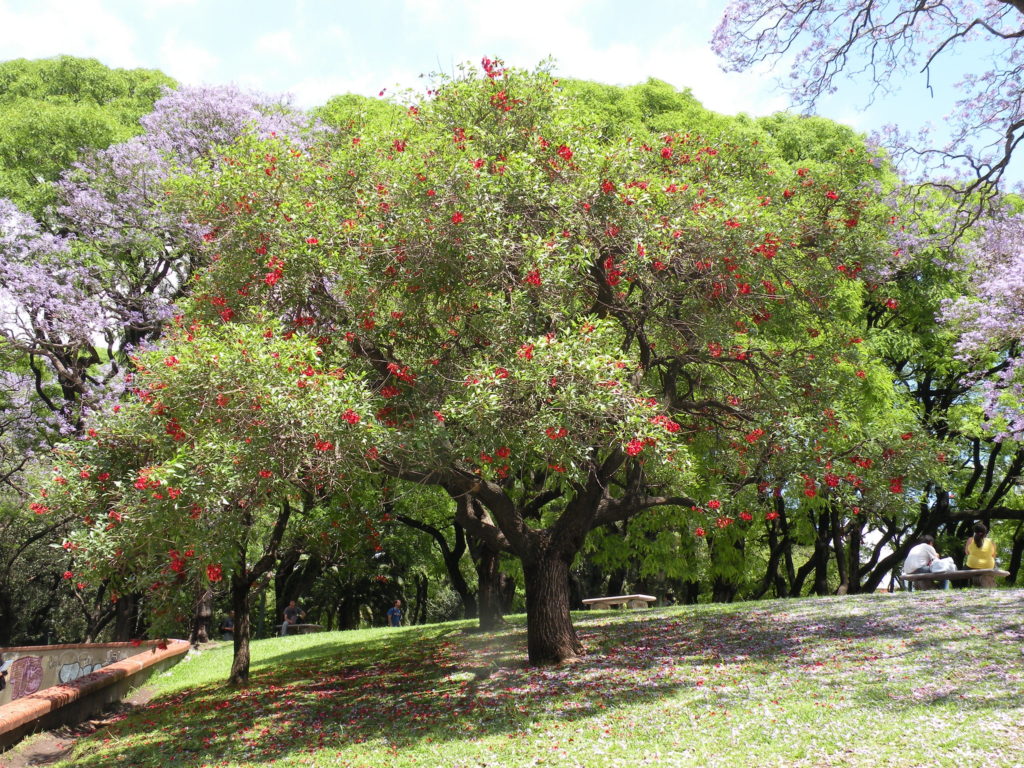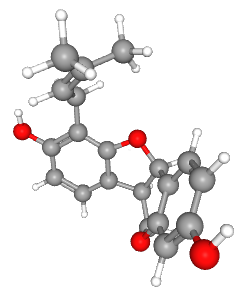- About Us
- Our Work
- Tree Info
- Get Involved
- Blog
- Volunteer
- Support Us
By Canopy Team on September 23, 2019

Image courtesy Cyril Nelson via Flickr
Tree Spotlight Series: Follow along as we learn about the fascinating trees that live among us. This series is in partnership with Rhee Lab in the Plant Biology Department of the Carnegie Institution for Science.
Other posts in the series: ginkgo biloba, Douglas fir, giant sequoia, Chinese tallow, silver-dollar gum, Monterey pine, green dracaena, coast live oak, cork oak, Japanese maple, silver birch, dawn redwood, Japanese persimmon ‘Hachiya’, carob, California bay, avocado, southern magnolia, flowering dogwood, red ironbark eucalyptus, blackwood acacia, and narrow leaved paperbark.
The cockspur coral tree (Erythrina crista-galli), known as ceibo in Spanish, is a symbol of bravery in Argentina. As Argentina’s national flower, the cockspur coral is mentioned widely in its culture through poetry, songs, and folklore. One legend tells of a young woman named Anahí who loved to sing about nature. After conquistadors invaded her land, Anahí escaped and killed her captor in the process.
When recaptured, she kept singing about her land as she burned at the stake. In the morning, the guards awoke to find a beautiful, blooming ceibo where Anahí once stood. In addition to Argentina’s admiration for the ceibo, the tree is admired in other parts of the world for its stunning flowers and its antiviral and antiparasitic properties.
The cockspur coral became widespread through its buoyant seeds that can easily disperse via water. Just like other seeds that travel via water currents or through the feces of migratory birds, many Erythrina crista-galli sprout throughout Argentina, Uruguay, Brazil, Paraguay, and Indonesia.
Also widely planted in California and other states, the cockspur coral is an attractive tree to all.
Blooming in clusters, the tree’s scarlet-colored flowers have a unique petal arrangement. The flower consists of five petals that resemble a rooster’s crest. The tree’s Latin name “Erythrina crista-galli” means “red cock’s comb.”
The flower’s beauty also attracts hungry pollinators. Typically, percher birds and insects pollinate the tree. Finally, the curved shape of the largest petal allows nectar to collect at the base of the calyx and roll downward, making a quick, delectable snack for passing pollinators.
In addition to its beautiful flowers, the cockspur coral’s leaves produce the precious alkaloid antiviral compound erythraline-11β-O-glucopyranoside. Recent studies found that this compound defends the tree against the infamous Tobacco Mosaic Virus (TMV).
Affecting many crops such as tomatoes, pepper, and cucumber, TMV is a harrowing plant disease. The virus causes a mosaic pattern of discoloration on plants’ leaves and soon after, the majority of the plant’s leaves dies.
On the other hand, cockspur coral’s leaves remain untouched by the virus because it produces erythraline-11β-O-glucopyranoside. Hopefully, with further research, this compound found in the tree will lead to the prevention of TMV infection in other plants.

Lastly, the leaves and bark also produce anti-malarial compounds. The tree’s bark and leaf extract have long been used as a traditional medicine for malaria in Indonesia.
Phaseollidin, a flavonoid also found in other plants such as the common bean, is thought to be one of the main active compounds with anti-parasitic properties that are produced in the leaves and bark. In the end, the cockspur coral’s defensive measures prove helpful for the tree and humans alike.
See the cockspur coral in person! Check our Canopy’s Elizabeth F. Gamble Garden Tree Walk and University South Tree Walk in Palo Alto.
Please note that Canopy does not recommend planting the cockspur coral as it has high water needs, is susceptible to limb drop, and is sensitive to frost.
Suhyun (Suzie) Lee is a 2019 summer intern at the Rhee Lab in the Plant Biology Department of the Carnegie Institution for Science. She is a first year student at Cal Poly University studying biology. Molecular biology has always piqued her interest and in the future, she hopes to pursue research regarding the defense mechanisms of organisms and phenotypic plasticity within plants or animals. In her free time she loves to paint, hike, and garden.